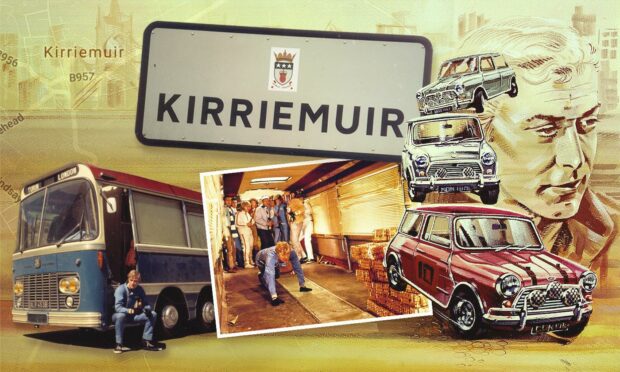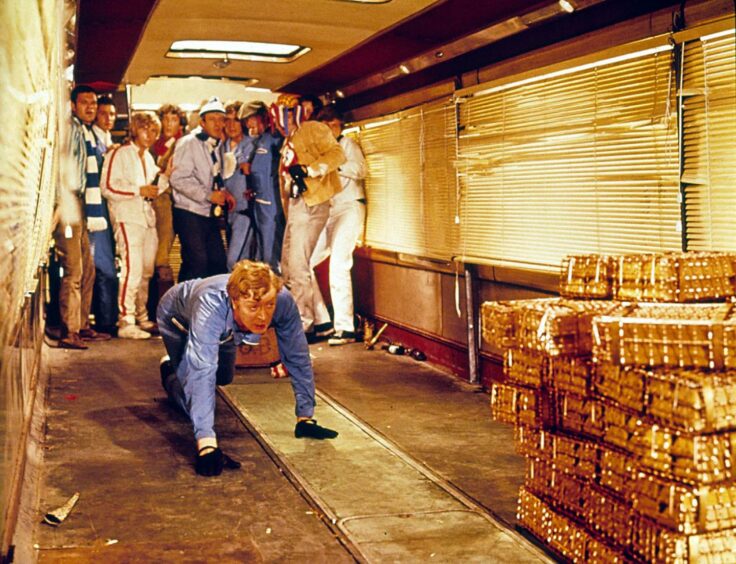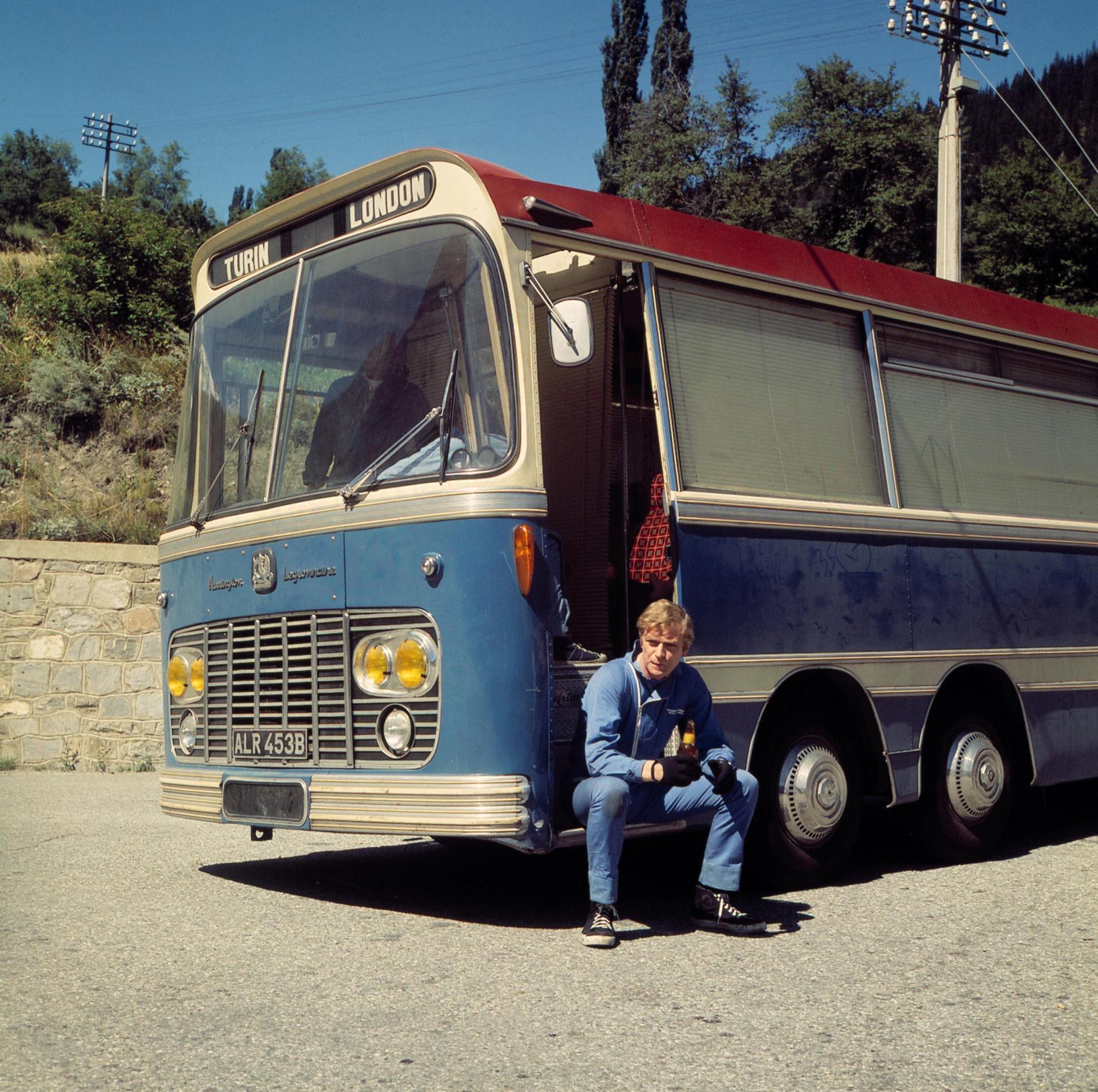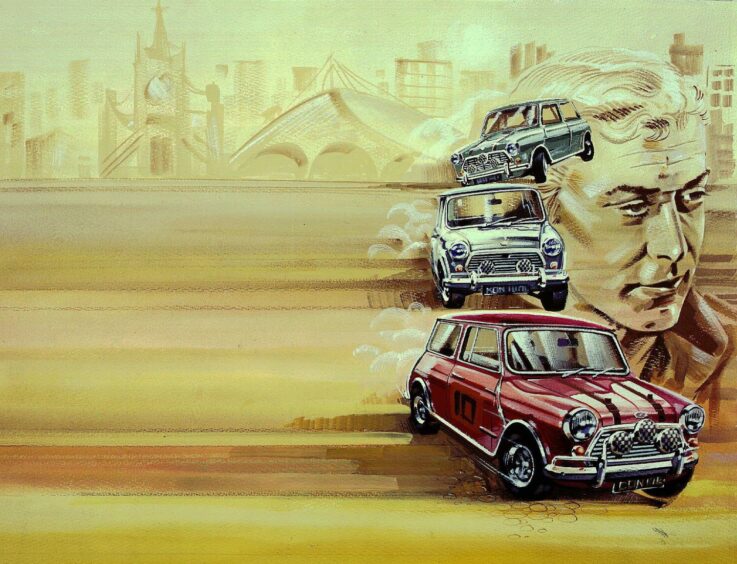The Italian Job bus made a new start doing the school run in Kirriemuir after see-sawing over a cliff in cinema’s ultimate cliff-hanger.
So how did the bus end up back in commercial service in the Wee Red Toon and what might it have been worth today if it escaped the cutter’s torch?
Matthew Field is the world’s leading authority on The Italian Job and his 355-page book includes the story of what happened to the bus after the closing credits rolled.
Matthew said the Harrington ALR 453B was first registered in June 1964 and was registered to Paramount Film Services for the duration of the film.
New to Battens coaches of London, the vehicle was converted especially for the film.
The bus became famous in the final scene of the 1969 classic starring Michael Caine, as the weight of stolen gold bars threatened to tip it over into the gorge below.
After the film, the bus had its rear doors welded shut and was converted back into a passenger vehicle that operated in Blackpool, Liverpool and later Kirriemuir.
Kirriemuir operator James Meffan gave it a yellow and white livery and the most famous bus in movie history was often used for school runs from 1973 to 1979.
Was the famous Legionnaire roadworthy?
“Today, I don’t think it would pass health and safety regulations to go back into service,” said Matthew.
“Remember, the rear of the coach has been cut off to fit those bespoke doors.
“It had endured three Minis racing into the back of it at speed.
“And, it had been suspended over the Alps and had all sorts of jacks, rigs, pulleys and anchors drilled into it.
“It had certainly taken a beating.
“However, it was a key vehicle in the story, so today it would most probably be put into storage in case there was a possibility of a sequel.”
The Italian Job bus died in Fife
The Self Preservation Society: 50 Years of The Italian Job book describes how the bus went on to be scrapped in Fife despite its movie history being well-known.
The Harrington ALR 453B was purchased by racing driver Archie Crowmar in Anstruther in 1979, who gutted the bus and removed all 36 seats.
The bus was converted — like in the film — into a transporter for his Formula Ford racing car and negotiated with The Craw’s Nest Hotel for some sponsorship.
In 1983 the bus was sold to Raymond Gatherham who used it as a horsebox before it was owned by motorbike and sidecar racing champion Bill Davie from 1985.
Mr Davie recalls in the book: “I had the opportunity to buy this bus and I paid £600 for it.
“We knew it was the bus from The Italian Job, but it was just considered a working vehicle to us.
“People recognised it.
“A sign-writer from Fife wrote ‘The Italian Job’ on the front of the bus for us in small italics.”
Bill took it to the Isle of Man on the ferry a few times for the Sidecar TT, but it just kept breaking down so he sold it to a local lad for £350.
The bus was taken off the road in 1987 and was still decorated in the colours of Strathspeed Racing when it was scrapped in 1990 by Burnside Motors in Leven.
The association with The Italian Job was known when she was broken up, but even with this knowledge, nobody had the foresight to preserve her.
Love affair
Matthew immediately fell in love with The Italian Job when he watched it aged four and his in-depth book is the second he has written about the movie.
He said: “The Italian Job is loaded with sixties swagger, and famed for its endlessly quotable dialogue, along with one of the most impressive car chases in movie history.
“And of course, Michael Caine at his very best.
“It is the ultimate celebration of ‘cool Britannia’.
“Half a century later, Britain’s affection for the film shows no sign of waning.”
Kirriemuir historian David Orr said the Italian Job bus would be seen on a daily basis in the town in the 1970s, taking children to school from the garage at Parkend.
“The bus in The Italian Job was originally a distinctive blue and white Bedford Harrington but was painted yellow and white in Kirriemuir,” said David.
“One former pupil remarked that it was simply one of the school buses but inside you could still see the riveted seam down the back where the doors were welded shut.
“I believe that the bus also still had welded fixing points under the chassis where the cables held it from going over the cliff in that famous final scene.
“A member of the Meffan family was able to confirm they went for their corporate colours so it was not recognised as the iconic bus from the film.
“I wonder how many people may have ridden on it on their way to school and not known how famous their bus was?
“However, you can still see the bus in Kirrie – if you know where to look!
“It appears in the eight-metre-long mosaic on a gable in the town’s Cumberland Close, which was the public art project created by Maureen Crosbie.”
More like this:
How Dundee actress sang her way into the spotlight in The Wicker Man
Aberdeen 80s heroes could have lined up in Escape to Victory
Jon S Baird’s film about Laurel and Hardy was a labour of love which developed from childhood













